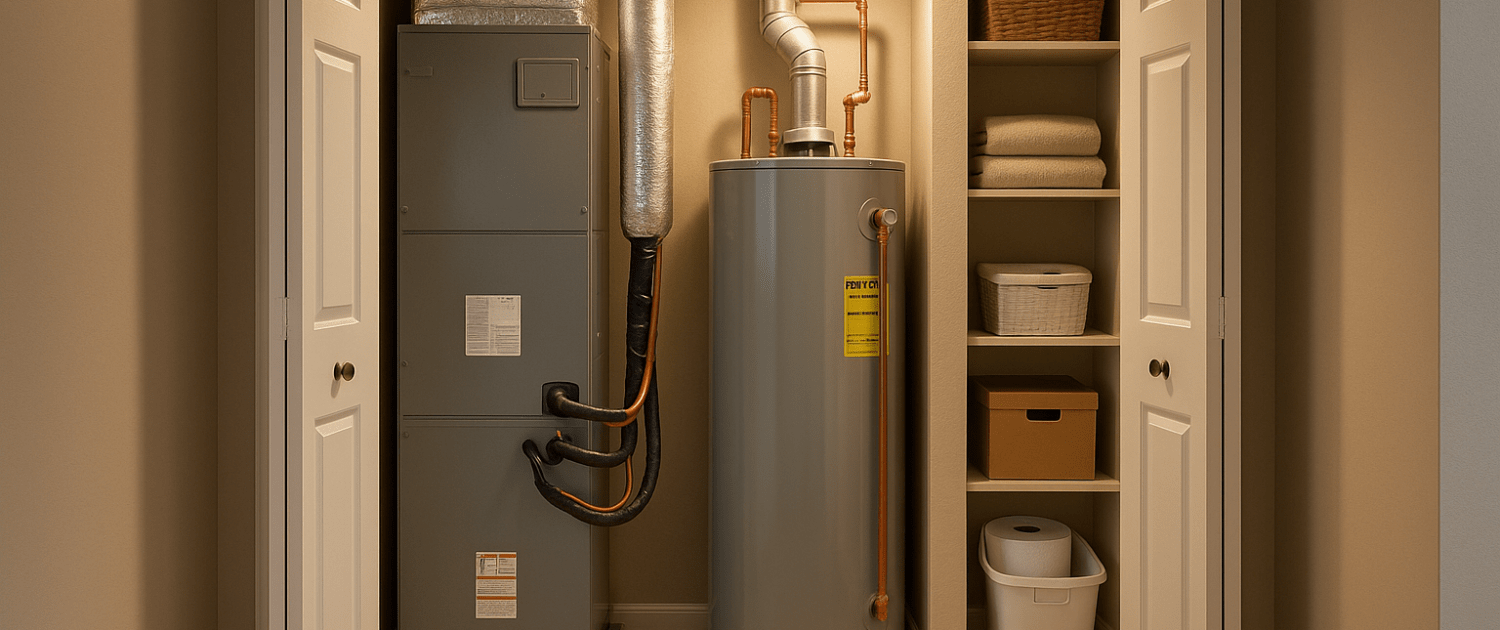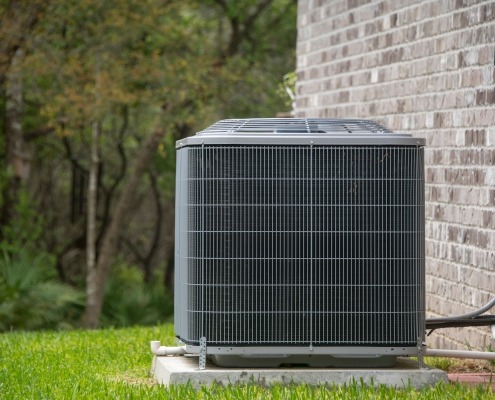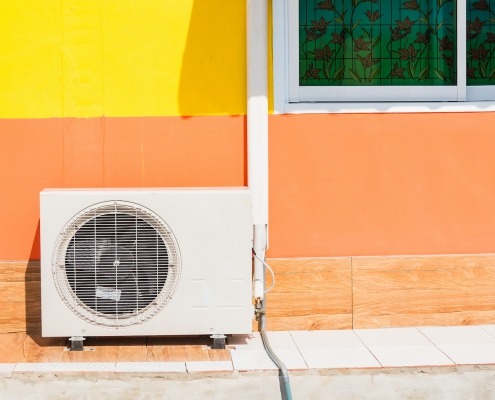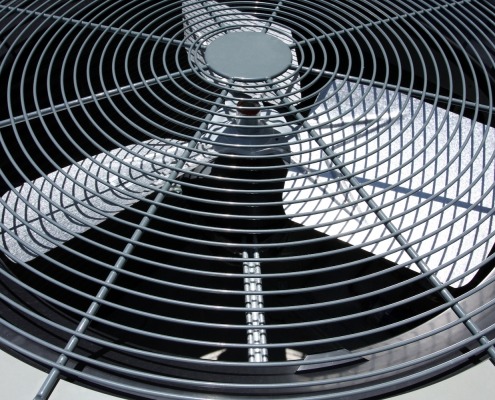What to Do with Your Central AC Before Leaving for Vacation
Steven E / Wednesday July 2, 2025
You’ve packed your bags, double-checked your itinerary, and arranged for the mail to be held. But have you thought about what your central air conditioner needs while you’re away? Whether you’re heading out for a long weekend or a two-week summer escape, your AC doesn’t need to keep running full blast while you’re gone, but shutting it down completely might not be the best idea either.
Taking the time to prepare your central AC before vacation can help you save money, protect your home, and extend the life of your system. We’ll cover everything you can do in under an hour before walking out the door.
The information in this article may not apply to your specific appliance model. We recommend consulting your manufacturer’s documentation or contact us with any questions.
Why Prepping Your AC Before Vacation Matters
When you’re not home, your AC system still runs, sometimes more than it should. Without any tweaks, you may waste energy cooling an empty house. But there’s more at stake than just energy use.
Here’s why your AC needs attention before you leave:
- Reduce energy bills while no one’s home
- Prevent excessive wear and tear on the system
- Protect indoor air quality and humidity levels
- Avoid unwanted surprises like a clogged drain or frozen coil
- Deter break-ins with the appearance of a lived-in home
A little preventative action now will help ensure everything is working perfectly when you return.
Adjust Your Thermostat for Savings and Safety
One of the easiest ways to prep your AC is to tweak the thermostat settings. Your goal is to save energy without creating a stuffy, humid indoor environment that could harm wood furniture, electronics, or even lead to mold.
- Set the temperature higher, but not off, aim for 80–85°F while you’re gone.
- If you have pets or plants staying behind, keep it closer to 78°F.
- Use a programmable or smart thermostat to schedule or control remotely.
- Enable “vacation” or “away” mode if your thermostat has it.
Why Not Just Turn It Off?
Turning the AC off entirely can cause indoor humidity to climb, especially in humid climates. That moisture can damage floors, furniture, drywall, and electronics, so it’s better to keep some airflow and dehumidification going, even if minimal.
Clean or Replace the Air Filter
A dirty filter can make your AC system work harder than necessary, even if it’s only cycling occasionally while you’re gone.
How to Check and Replace:
- Turn off the system at the thermostat.
- Locate the filter (typically in a return vent or air handler).
- Remove and hold it up to the light. If you can’t see through it, replace it.
- Choose the right size and MERV rating for your system.
- Slide the new filter into place, following airflow direction arrows.
Tip: Use a clean filter to promote healthy airflow and reduce the chances of freezing coils or airflow restrictions while you’re away.
Inspect the Condensate Drain Line
The condensate drain removes the moisture that your AC pulls from the air. If it clogs while you’re away, it could lead to leaks, mold, or even water damage.
Quick Check:
- Find the drain line, usually a white PVC pipe near your indoor air handler.
- Check the end of the pipe outside to ensure water flows freely.
- Pour a cup of white vinegar into the drain line’s access point (often a T-shaped vent).
- If your system has a float switch, make sure it moves freely.
Do a Quick Visual Inspection of the Entire System
Even if everything seems to be working fine, giving your AC a quick once-over before leaving is a smart move.
Check the Following:
- Outdoor condenser unit: Remove leaves, branches, and debris from around it. Ensure there’s at least 2 feet of clearance on all sides.
- Exposed refrigerant lines: Make sure they’re insulated and in good condition.
- Fan blades and coil: Look for dirt buildup or visible wear.
- Indoor air handler or furnace cabinet: Wipe it down and ensure it’s dry and clean.
Close Blinds and Curtains
Keeping your home cooler while you’re away isn’t just about the AC; it’s also about blocking out the sun. Benefits:
- Reduces solar heat gain, lowering the temperature inside
- Reduces how often your AC cycles on
- Protects furniture and flooring from UV damage
Use light-blocking curtains or simply close the blinds to reduce unnecessary heat buildup inside your home.
Seal Up Drafts and Check Windows
Don’t let your AC’s hard work go to waste. Make sure cool air stays in, and hot air stays out.
What to Do:
- Check weather stripping on doors and windows.
- Seal any visible gaps with caulk or foam sealant.
- Make sure windows are completely shut and locked.
- If you’ve recently had a storm, inspect for any cracked panes or new leaks.
Every bit of insulation helps your system work more efficiently while you’re away.
Optional: Turn Off the System Entirely (With Caution)
In mild climates or during short trips, some homeowners choose to turn off the HVAC system entirely. This can work, but it’s not always ideal.
Consider This Only If:
- Temperatures are expected to stay mild (60–80°F)
- Your home is well-insulated
- You don’t have houseplants, pets, or electronics that are temperature-sensitive
Turning it off entirely is not recommended in areas with high humidity or extreme temperatures.
Where To Find Us
If you need any replacement parts for your appliances, you can enter your model number at AppliancePartsPros.com to locate and order them quickly. Most orders arrive in just two business days, and we have tons of great information in our repair help section and YouTube videos to help you troubleshoot.
Stay connected with the latest DIY tips, tutorial videos, and repair guides by following us on Facebook, Instagram, and Twitter. We love hearing about your repair stories and successes. If you need more help or want personalized guidance, feel free to reach out. We’re ready to help you take on your next project with confidence!
With nearly a decade of experience in providing top-notch customer service regarding appliance parts and repair, Steven enjoys sharing practical advice, troubleshooting tips, and interesting information to help readers stay informed.





